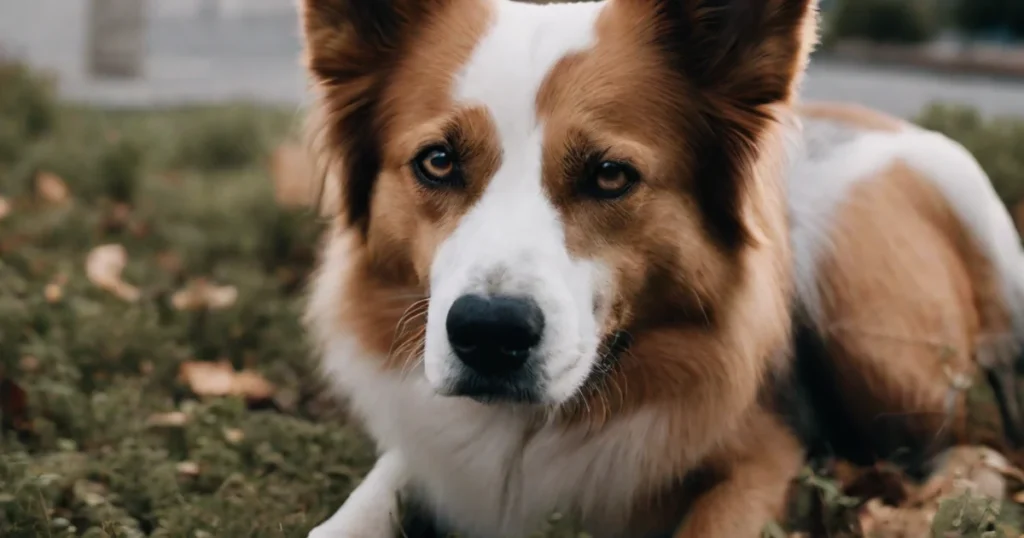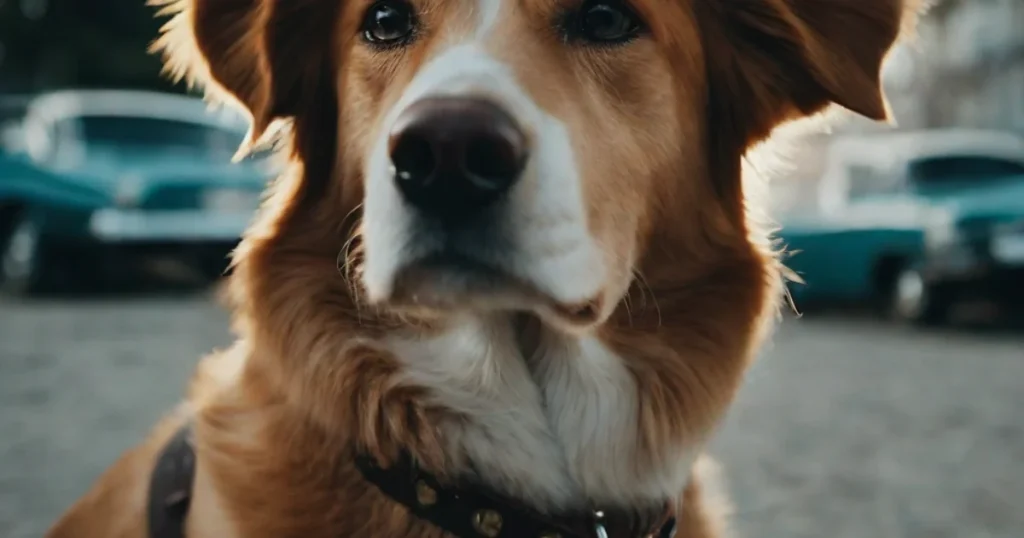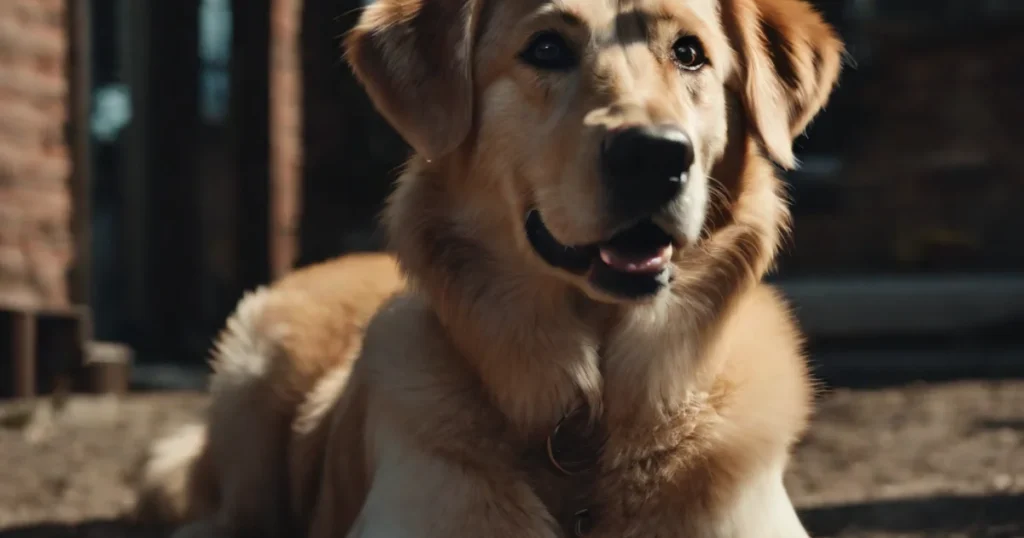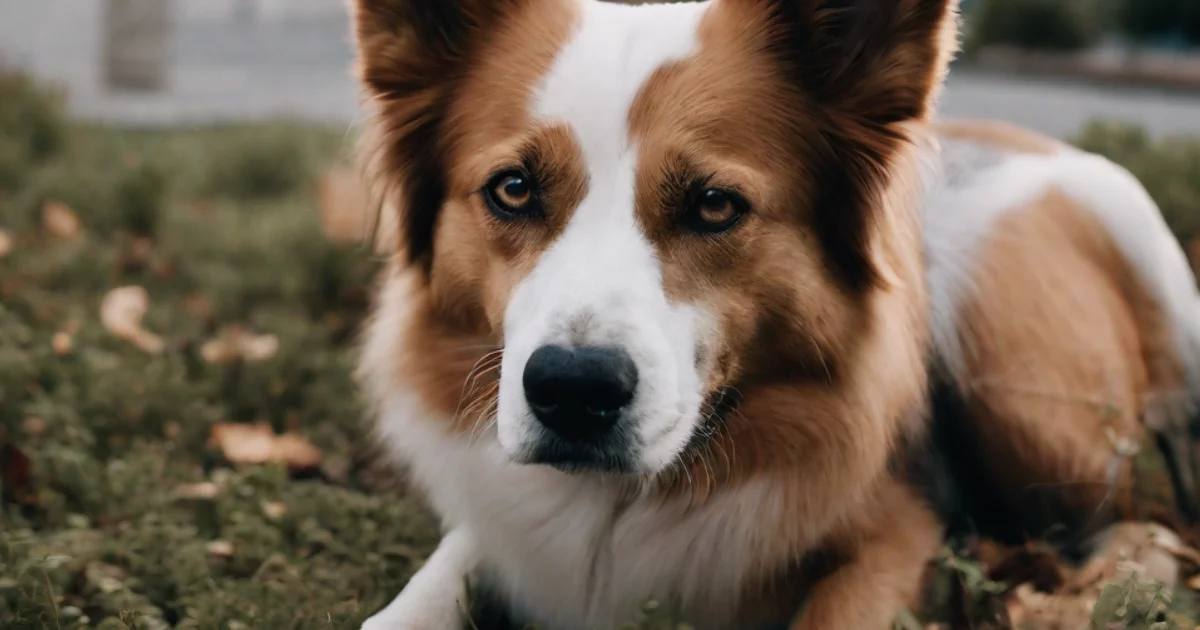Have you ever noticed your furry companion frantically chasing and barking at flies? Or maybe you’ve witnessed your dog cowering in fear at the sight of these tiny insects. As a pet owner, you may be wondering why your dog is scared of flies. After all, they are harmless and often annoying pests. Well, let me assure you that you’re not alone. Many dog owners have experienced the same confusion and concern. In this blog post, we’ll delve into the reasons why my dog is scared of flies and what you can do to help them overcome this fear.
Understanding the Fear Response in Dogs
Dogs, like humans, can experience fear. It’s a natural response to perceived threats or danger. When it comes to flies, it’s important to understand that dogs have different sensitivities and reactions to certain stimuli. Just like some people may have a fear of spiders or heights, some dogs may have a fear of flies.
The fear response in dogs can vary from mild to severe. It may manifest as trembling, cowering, barking, or even aggressive behavior. Dog owners need to recognize these signs and understand that their furry companions are genuinely scared.
One reason behind this fear response is the inherent predatory nature of dogs. Flies are fast-moving and can easily elude a dog’s grasp. This can frustrate and agitate them, triggering a fear response. Additionally, some dogs may have had negative experiences with flies in the past, such as getting bitten or stung, which can further contribute to their fear.
Understanding the fear response in dogs is crucial for providing the necessary support and comfort to our furry friends. By recognizing and acknowledging their fear, we can work towards helping them overcome it. In the following sections, we’ll delve into why some dogs are scared of flies, how to identify signs of fear in your dog, and most importantly, how to help them conquer their fear.

My Dog Is Scared Of Flies
My dog is scared of flies is often heard from many pet owners. After all, flies are tiny insects that are harmless to humans and often just annoying pests. However, for some dogs, the presence of flies can cause intense fear and anxiety.
One reason behind this fear is rooted in a dog’s inherent predatory instincts. Flies are fast-moving creatures that can easily elude a dog’s grasp. This can frustrate and agitate them, triggering a fear response. For dogs with a strong prey drive, the constant buzzing and erratic flight patterns of flies can be overwhelming and trigger their instinctual fear of prey.
Another factor that can contribute to a dog’s fear of flies is past negative experiences. Some dogs may have been bitten or stung by flies in the past, causing pain or discomfort. These negative encounters can create lasting fear and anxiety around flies, leading to fearful reactions whenever they are present.
Additionally, dogs are highly attuned to their surroundings and can pick up on their owners’ emotions. If a dog observes their owner’s fear or anxiety towards flies, they may mimic those emotions and develop their fear response.
It’s important to remember that every dog is unique, and the reasons behind their fear of flies may vary. While some dogs may be scared due to their prey drive or past negative experiences, others may have a heightened sensitivity to certain stimuli or an underlying anxiety disorder.
Understanding why your dog is scared of flies is the first step in helping them overcome their fear. By identifying the root causes, you can tailor your approach to best support and comfort your furry friend. In the next section, we will discuss how to identify signs of fear in your dog and provide tips on how to help them conquer their fear of flies.
Identifying Signs of Fear in Your Dog
As a loving pet owner, it’s essential to be able to recognize the signs of fear in your dog. While some dogs may show obvious signs of fear, such as trembling or cowering, others may display more subtle behaviors that indicate their unease. By understanding these signs, you can better support your furry friend and help them overcome their fear of flies.
One common sign of fear in dogs is excessive barking or growling at flies. Your dog may become fixated on the fly, barking and lunging in an attempt to chase it away. They may also show signs of restlessness or pacing when flies are present, indicating their discomfort.
Another telltale sign is the dog’s body language. A fearful dog may have their tail tucked between their legs, ears pinned back, and their body crouched low to the ground. They may also exhibit excessive drooling, panting, or trembling as a result of their fear.
Additionally, you may notice your dog seeking comfort and reassurance from you when flies are around. They may try to hide behind furniture or cling to your side in an attempt to feel safe. This behavior is a clear indication that they are feeling scared and vulnerable.
It’s important to note that not all dogs will exhibit the same signs of fear. Some dogs may freeze or become completely still when they encounter flies, while others may become more agitated and restless. Each dog is unique, and their response to fear will vary.
By closely observing your dog’s behavior, you can better understand their fear of flies and tailor your approach to help them overcome it. In the next section, we’ll discuss practical strategies to help your dog conquer their fear and feel more at ease around flies.

How to Help Your Dog Overcome Their Fear of Flies
If your furry friend is scared of flies, there are several steps you can take to help them overcome their fear. First and foremost, it’s important to remain calm and patient. Remember, your dog can pick up on your emotions, so staying calm will help them feel more at ease.
One effective approach is desensitization training. This involves gradually exposing your dog to flies in a controlled and positive environment. Start by showing them pictures or videos of flies, rewarding them with treats and praise for remaining calm. As they become more comfortable, you can gradually introduce them to real flies from a safe distance. Be sure to reward them for any calm and relaxed behavior.
Counterconditioning is another useful technique. This involves pairing the presence of flies with something your dog loves, such as a favorite toy or treat. Whenever flies are around, engage your dog in a fun activity or give them a tasty treat. This helps create positive associations with flies and can gradually reduce their fear response.
Creating a safe space for your dog is also essential. Provide them with a designated area where they can retreat when they feel scared or overwhelmed. This could be a cozy corner with their bed and favorite toys. Make sure this space is always accessible to them, especially when flies are present.
Lastly, consider seeking professional help if your dog’s fear of flies persists or worsens. A qualified trainer or animal behaviorist can provide expert guidance and develop a customized training plan to help your dog overcome their fear.
Remember, helping your dog overcome their fear of flies takes time, patience, and consistency. With the right approach and support, you can help your furry friend feel more at ease and confident in the presence of flies.
When to Consult a Professional
If your dog’s fear of flies persists or worsens despite your best efforts, it may be time to consult a professional. While many dogs can overcome their fear with patience and training, some may require additional support and guidance. A qualified trainer or animal behaviorist can assess your dog’s specific needs and develop a customized training plan to address their fear.
Consulting a professional can be particularly beneficial if your dog’s fear of flies is causing significant distress or affecting their quality of life. A professional can help you understand the underlying reasons for your dog’s fear and provide strategies to manage and alleviate their anxiety.
Additionally, a professional can help rule out any underlying medical conditions that may be contributing to your dog’s fear. Sometimes, dogs may display fearful behavior due to pain or discomfort, and addressing these issues can make a significant difference in their overall well-being.
Remember, seeking professional help is not a sign of failure as a pet owner. It simply means that you care about your dog’s well-being and want to provide them with the best possible support. With the expertise and guidance of a professional, you can ensure that your dog receives the help they need to overcome their fear of flies and live a happier, more relaxed life.

Preventing Future Fearful Reactions
Now that you have a better understanding of why your dog is scared of flies and how to help them overcome their fear, it’s important to take steps to prevent future fearful reactions. While it may not be possible to eliminate your dog’s fear of flies, there are strategies you can employ to help them feel more at ease in the presence of these tiny insects.
Firstly, creating a positive and calm environment is crucial. Dogs are highly perceptive to their surroundings, so if you remain calm and composed when flies are present, it can help your dog feel more relaxed. Avoid showing any signs of anxiety or fear, as this can amplify your dog’s fears.
Secondly, consistency is key. It’s important to be patient and consistent in your training efforts. Stick to a routine and continue to expose your dog to flies in a controlled and positive way. Reinforce positive behaviors with treats and praise, and avoid punishing or scolding your dog for being scared.
Additionally, teaching your dog a “leave it” or “ignore” command can help redirect their attention away from flies. Practice this command regularly and reward your dog when they respond correctly. This can give them a sense of control and empower them to choose a calmer response.
Lastly, be proactive in managing your dog’s environment. Keep doors and windows closed to prevent flies from entering your home. Use screens or netting to create a barrier, particularly during times of the year when flies are more prevalent. By minimizing your dog’s exposure to flies, you can help reduce their fear response.
By implementing these preventative measures, you can help your dog feel more secure and confident in the face of flies. Remember, overcoming fear takes time and patience, but with your support and understanding, your furry friend can conquer their fear and live a happier, more relaxed life.
Exploring Alternative Remedies for Fearful Dogs
If you have a dog that is scared of flies, you may be wondering if there are any alternative remedies to help them overcome their fear. While every dog is unique and may respond differently to different treatments, there are a few options you can explore.
One alternative remedy to consider is natural calming supplements. These supplements, often containing ingredients like chamomile or valerian root, can help promote relaxation and reduce anxiety in dogs. You can find these supplements in various forms such as treats or liquids, making it easy to incorporate them into your dog’s routine.
Another option to explore is the use of essential oils. Some essential oils, such as lavender or chamomile, have calming properties that can help soothe your dog’s anxiety. However, it’s important to note that essential oils should always be used with caution and diluted properly before applying to your dog. Be sure to consult with a veterinarian or a professional experienced in using essential oils for dogs to ensure safety and effectiveness.
Acupuncture and acupressure are also alternative remedies that can be beneficial for fearful dogs. These practices involve stimulating specific points on your dog’s body to promote relaxation and balance their energy. By working with a trained and certified veterinary acupuncturist or acupressure practitioner, you can explore these methods as part of a holistic approach to helping your dog overcome their fear.
In addition to these alternative remedies, it’s important to continue implementing behavior modification techniques and positive reinforcement training to help your dog conquer their fear. Remember, every dog is unique, and what works for one may not work for another. Be patient and willing to try different approaches until you find what works best for your furry friend.
Remember, these alternative remedies should be used in conjunction with professional guidance and supervision. Consulting with a veterinarian or a professional experienced in treating fear and anxiety in dogs can help ensure that you’re making the right choices for your dog’s well-being.
By exploring alternative remedies and seeking professional guidance, you can provide your fearful dog with the support and assistance they need to overcome their fear of flies and live a happier, more relaxed life.
Common Misconceptions About Dog Fears
When it comes to dogs and their fears, several common misconceptions can lead to misunderstanding and ineffective solutions. It’s important to debunk these misconceptions and gain a better understanding of how to support our furry friends.
One common misconception is that a dog’s fear is irrational or silly. Many people fail to recognize that dogs, just like humans, have their unique fears and sensitivities. What may seem insignificant or harmless to us can trigger intense fear and anxiety in a dog. It’s crucial to approach their fears with empathy and understanding, rather than dismissing them as irrational.
Another misconception is that a dog’s fear can be easily overcome by force or punishment. This is not only ineffective but can also worsen the fear and create more negative associations. It’s important to remember that fear is a powerful emotion, and forcing or scolding a fearful dog will only reinforce their fear response. Instead, positive reinforcement, desensitization, and counterconditioning techniques should be employed to help them overcome their fears.
Additionally, some people believe that a dog’s fear is simply a phase that they will grow out of. While it’s true that some puppies may outgrow certain fears as they mature, others may need ongoing support and training to overcome their fears. It’s important to recognize that every dog is unique and may require different approaches and timelines to conquer their fears.
Lastly, there is a misconception that comforting a fearful dog will reinforce their fear. This is not true. Providing comfort and reassurance to a scared dog does not reinforce their fear but rather helps them feel safe and secure. Ignoring their fear or forcing them to face their fears without proper support can make the fear worse and damage the bond between you and your dog.
By debunking these misconceptions, we can approach our dog’s fears with the right mindset and techniques. Understanding that their fears are valid, using positive reinforcement, and providing comfort will go a long way in helping our furry friends overcome their fears and live a happier, more confident life.
Flies and Other Insect-Related Fears
While flies may be a common fear for many dogs, it’s important to recognize that some dogs may have fears or anxieties related to other insects as well. Just like with flies, the fear of other insects can stem from a dog’s predatory instincts, negative past experiences, or even just their unique sensitivities.
For example, some dogs may be terrified of spiders, beetles, or even bees. These insects can evoke fear due to their appearance, sudden movements, or the potential for a painful sting. Other dogs may be particularly fearful of buzzing insects, such as wasps or hornets, because of their intimidating sounds and unpredictable flight patterns.
Pet owners need to be attentive to their dog’s reactions and behaviors around all insects, not just flies. Signs of fear can include excessive barking, cowering, hiding, or even aggression towards insects. By understanding your dog’s specific fears, you can better tailor your approach to help them overcome these anxieties.
The strategies and techniques discussed earlier in this blog post, such as desensitization training and counterconditioning, can be applied to other insect-related fears as well. Additionally, creating a safe and calm environment, providing a designated safe space for your dog, and seeking professional guidance if needed are all important steps in helping your dog conquer their fears of any insect.
Remember, each dog is unique, and their fears may vary. By acknowledging and addressing their fears, you can provide the necessary support and comfort to help your furry friend overcome their anxieties and live a happier, more relaxed life.
Conclusion
In conclusion, if you’ve ever wondered why your dog is scared of flies, you’re not alone. Many dog owners have experienced this confusion and concern. It’s important to understand that dogs, like humans, can experience fear, and their sensitivities and reactions to certain stimuli can vary. Flies, with their fast movements and ability to elude a dog’s grasp, can trigger a fear response rooted in a dog’s predatory nature. Negative past experiences with flies, such as bites or stings, can also contribute to their fear.
Identifying signs of fear in your dog, such as excessive barking, trembling, or seeking comfort, is crucial for providing the necessary support. Understanding why your dog is scared of flies allows you to tailor your approach and help them overcome their fear. Techniques such as desensitization training and counterconditioning can be effective in gradually exposing your dog to flies in a positive and controlled environment.
Remember, helping your dog conquer their fear of flies takes time, patience, and consistency. If their fear persists or worsens despite your efforts, it may be necessary to consult a professional. With their guidance, you can develop a customized training plan to address your dog’s specific needs.
By implementing preventive measures, exploring alternative remedies, and understanding common misconceptions about dog fears, you can help your furry friend feel more secure and confident in the face of flies and other insects. With your love and support, your dog can conquer their fear and live a happier, more relaxed life.
FAQs
Q: Are dogs bothered by flies?
A: Some dogs may be bothered by flies, while others may not pay much attention to them. Flies can be irritating to dogs, especially if they buzz around their face or ears. Dogs may exhibit behaviors such as pawing at their face or trying to snap at the flies to get rid of them.
Q: Why does my dog like killing flies?
A: Dogs have a natural prey drive, and flies can trigger their hunting instincts. Dogs may enjoy chasing and catching flies as it satisfies their innate desire to hunt and capture moving objects. It can also be a form of mental and physical stimulation for them.
Q: Are dogs scared of flying?
A: Generally, dogs are not scared of flying itself as they are more accustomed to traveling by air. However, individual dogs may have different reactions to flying, such as anxiety or fear due to the unfamiliar environment, loud noises, or turbulence. Proper preparation, training, and acclimation can help alleviate any fears or stress related to flying.
Q: How do I stop my dog from chasing flies?
A: To stop your dog from chasing flies, you can redirect their attention to more appropriate activities and provide alternative outlets for their energy. Engaging your dog in interactive play, providing mental stimulation through puzzle toys, and teaching them commands like “leave it” or “stay” can help redirect their focus away from flies. Consistency and positive reinforcement are key in training your dog to ignore flies and respond to your commands.

